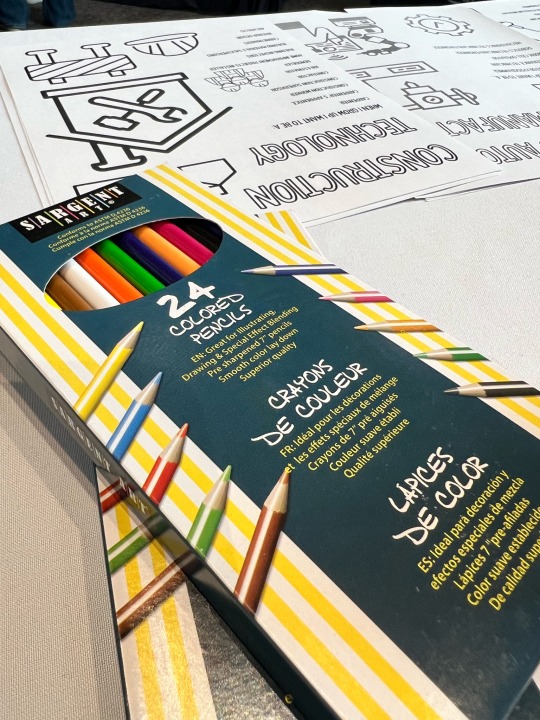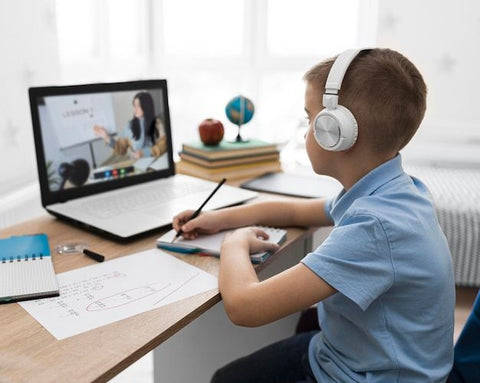#STEAMeducation
Explore tagged Tumblr posts
Text

Adding the “A” to STEMfest today - STEAMing it up. Being creative and using knowledge to create.
#women in stem#career development#steam#creative#education#stemeducation#steameducation#science#science museum#arts & crafts
2 notes
·
View notes
Text
Ensure College & Career Readiness—STEM Labs Give Your Students a Head Start!
https://makersmuse.in/wp-content/uploads/2025/02/481327246_651997900615559_1800281227878104468_n.jpg
From Classroom to Career: A STEM Success Story
When 16-year-old Mia stepped into her high school’s STEM lab, she had no idea it would shape her future. At first, she hesitated, uncertain about engineering. But after working on a robotics project, she discovered a passion for problem-solving and innovation. With the skills she developed in her STEM lab, Mia earned an internship at a tech company and later secured a college scholarship in engineering.
Mia’s story is not unique. STEM labs provide students with real-world skills that prepare them for college and high-demand careers. As the job market shifts toward technology, engineering, and data-driven industries, schools must equip students with critical thinking, collaboration, and technical skills to thrive in the 21st century.
Why STEM Labs Are Essential for College & Career Readiness
Today’s workforce is STEM-driven. According to the U.S. Bureau of Labor Statistics, STEM occupations are projected to grow by 10.8% by 2031, outpacing non-STEM jobs. Employers increasingly seek candidates with hands-on experience in technology, problem-solving abilities, and teamwork—all of which STEM labs provide.
93% of parents believe STEM education is crucial for their child’s future success (Microsoft, 2023).
STEM graduates earn 26% more on average than non-STEM peers (National Science Foundation, 2022).
80% of future jobs will require STEM-related skills (World Economic Forum, 2023).
By integrating STEM labs into education, schools can bridge the gap between academic learning and real-world applications, giving students a competitive edge in college admissions and careers.
Key Benefits of STEM Labs in Education
1. Hands-On Learning for Deeper Understanding
Traditional lectures don’t always engage students or prepare them for real-world challenges. STEM labs allow students to build, experiment, and innovate, reinforcing theoretical concepts with practical applications.
Example: Instead of just learning about Newton’s Laws, students can design and test rockets, applying physics principles in a dynamic learning environment.
2. Developing Future-Ready Skills
Employers seek critical thinkers, problem solvers, and collaborators. STEM labs help students develop:
Technical skills (coding, robotics, 3D printing).
Analytical thinking (data interpretation, engineering design).
Creativity and innovation (prototyping solutions to real-world problems).
3. Increased College Admission and Scholarship Opportunities
STEM-related extracurricular activities and projects strengthen college applications. Many universities offer scholarships for students excelling in STEM competitions or research projects.
Example: Students who participate in FIRST Robotics or Science Olympiad gain a higher acceptance rate into top STEM programs.
4. Career Pathway Exploration
A well-equipped STEM lab exposes students to various career fields, including:
AI & Data Science – Learning about machine learning and analytics.
Biomedical Engineering – Designing prosthetics and conducting lab experiments.
Aerospace & Robotics – Building drones or robotic arms.
By providing career exploration opportunities, STEM labs inspire students to pursue high-demand careers.
How Schools Can Maximize the Impact of STEM Labs
1. Industry Partnerships & Mentorship Programs
Collaborate with local businesses, tech companies, and universities to offer:
Internships and hands-on training.
Guest lectures from STEM professionals.
Workshops and hackathons to develop practical skills.
2. Integrate STEM into All Subjects
STEM isn’t just for science and math—it can enhance all subjects:
History: Use virtual reality (VR) to explore historical events.
Art: Combine 3D modeling with creative design projects.
English: Encourage students to write research papers on STEM advancements.
3. Encourage Project-Based Learning (PBL)
STEM labs thrive on hands-on, student-led projects. Some engaging project ideas:
High School: Build a solar-powered vehicle and test its efficiency.
Middle School: Program a chatbot using artificial intelligence.
Elementary School: Design an eco-friendly city model using renewable energy concepts.
Prepare Your Students for the Future with STEM Labs
STEM labs aren’t just an educational trend—they’re a necessity for preparing students for college and career success. By investing in hands-on learning, schools can equip students with the skills, knowledge, and confidence to excel in a competitive world.
Give Your Students a Head Start—Explore STEM Lab Solutions Today!
Find resources, funding opportunities, and expert guidance. Start here!
Don’t wait start building a STEM lab in your school today!
Contact Maker Muse Today! Website: https://makersmuse.in/ Email: [email protected]
0 notes
Text
Why Is an IB Curriculum the Best for Your Child’s Future?
Unlock endless opportunities for your child with an IB education. Designed to foster critical thinking, creativity, and global awareness, our curriculum is perfect for shaping tomorrow’s leaders. What we offer:

Global Perspective: Preparing students for the international stage.
Innovative Learning: Focused on problem-solving, inquiry, and collaboration.
Advanced Facilities: Modern classrooms, sports facilities, and co-curricular programs.
Supportive Community: Building confident and compassionate individuals. Admissions are open—secure your child’s seat at the best! 🌐 Visit https://drsinternational.com/ for details. 📞 Reach us at 93914 22060. #TopIBSchools #GlobalEducationOpportunities #DRSInternationalAdmissions #BestFutureForKids
#TopIBSchools#GlobalEducationOpportunities#DRSInternationalAdmissions#BestFutureForKids#TopSchoolHyderabad#IBSchoolIndia#AdmissionsOpen2025#EducationForTomorrow#TopBestSchool#BestInternationalSchool#TopRatedSchools#DRSInternationalSchool#FutureLeaders#GlobalEducation#InnovativeLearning#HolisticEducation#InternationalSchoolHyderabad#TopSchoolAdmissions#STEAMEducation#AcademicExcellence"
0 notes
Text
Top Education Trends for Kids in 2025
The world of education is constantly evolving, and 2025 is no exception. As technology advances and teaching methodologies adapt, new trends are shaping the way children learn and develop essential skills. Here’s a look at some of the most popular education trends for kids in 2025.

1. Personalized Learning Through AI
Artificial Intelligence (AI) is revolutionizing education by offering personalized learning experiences. AI-powered platforms analyze a child’s learning style, strengths, and areas for improvement, creating customized lesson plans. This approach ensures that each child progresses at their own pace, maximizing learning outcomes.

2. Gamification of Education
Gamification continues to gain traction as a fun and effective way to engage children in learning. By incorporating game-like elements such as rewards, challenges, and leaderboards, students are motivated to actively participate and retain information. Popular subjects using gamification include math, science, and language arts.
3. Focus on Emotional Intelligence (EQ)
In 2025, schools are emphasizing the importance of emotional intelligence alongside traditional academics. Programs designed to teach empathy, self-regulation, and social skills are becoming integral parts of the curriculum, helping children develop well-rounded personalities.

4. STEM and STEAM Education
Science, Technology, Engineering, Arts, and Mathematics (STEAM) education remains a cornerstone of modern learning. With a focus on hands-on projects and interdisciplinary studies, STEAM encourages critical thinking, problem-solving, and creativity, preparing kids for future careers.
5. Integration of Virtual and Augmented Reality (VR/AR)
VR and AR technologies are making learning more immersive and engaging. From virtual field trips to interactive 3D models, these tools bring abstract concepts to life, enhancing comprehension and sparking curiosity in young learners.

6. Eco-Education and Sustainability Awareness
As the world faces environmental challenges, teaching kids about sustainability has become a priority. Schools are incorporating eco-education into their curriculum, focusing on topics like recycling, conservation, and climate change to raise environmentally conscious citizens.
7. Hybrid and Flexible Learning Models
The pandemic paved the way for hybrid learning, and its benefits continue to influence education in 2025. Combining in-person and online learning, this model provides flexibility, accessibility, and personalized support, making education more inclusive.

8. Global Collaboration Projects
With advances in technology, students now have opportunities to collaborate with peers across the globe. These projects teach cultural awareness, teamwork, and global problem-solving skills, broadening their perspectives and preparing them for a connected world.
9. Mindfulness and Mental Health Focus
Recognizing the importance of mental health, schools are integrating mindfulness practices into daily routines. Techniques such as meditation, deep breathing, and journaling help children manage stress, improve focus, and enhance overall well-being.
10. Coding and Digital Literacy
In an increasingly digital world, coding and digital literacy are essential skills. Coding clubs, interactive programming lessons, and courses on safe internet practices are equipping kids with the tools they need to navigate and thrive in the digital age.
Final Thoughts
Education in 2025 is all about innovation, inclusivity, and preparing kids for the future. By embracing these trends, parents and educators can ensure that children not only excel academically but also develop the life skills needed to succeed in a dynamic world.
#momatos.in
#EducationTrends2025#KidsLearning#FutureOfEducation#PersonalizedLearning#STEAMEducation#GamificationInEducation#DigitalLiteracy#MindfulnessForKids#VRInEducation#EcoEducation
0 notes
Text
Future of Artificial Intelligence for Kids: How Artificial Intelligence Can Change Kids Future?

The Future of Artificial Intelligence for Kids is bright and transformative. AI is revolutionizing education by offering personalized learning experiences, helping teachers become more efficient, and preparing kids for a tech-driven future. Unlike traditional classrooms, AI enables customized lessons tailored to each child’s needs, ensuring no student is left behind.
Teachers can leverage AI to create interactive assignments and virtual sessions, allowing shy students to ask questions comfortably. AI also reduces teachers' burdens by automating tasks like grading, letting them focus on nurturing emotional and social skills—something technology cannot replace.
For kids, AI introduces STEAM-based learning (Science, Technology, Engineering, Arts, and Math), encouraging creativity, critical thinking, and problem-solving. Coding, robotics, and AI programs are reshaping education, helping children gain essential skills to excel in future careers.
By embracing AI, we empower kids to innovate, explore, and succeed, preparing them to thrive in an ever-evolving technological world.
Learn More - https://goglobalways.com/blog/future-of-artificial-intelligence-for-kids/
#FutureOfAIForKids#ArtificialIntelligence#AIInEducation#EdTechInnovation#KidsAndAI#STEAMEducation#CodingForKids
0 notes
Text

Opening Special - Limited Enrollment Offer
For a limited time, the first 100 students enrolled at our new Alphabetz Montessori Bulverde Rd location will enjoy a waived registration fee of $150!


Register now and save – limited spots available!

#AlphabetzMontessori#MontessoriEducation#BulverdeRdMontessori#EnrollmentOffer#MontessoriLearning#EarlyChildhoodEducation#HandsOnLearning#STEAMEducation#MontessoriCurriculum#NewLocationSpecial#MontessoriParents
0 notes
Text

Pepito & The Trash Cans, a bilingual, musical story about a boy who makes his own instruments from bottles, cans and other upcycled materials.
#teachingartist#artistinschools#bilingualstorytelling#bilingualstoryteller#storytelling#storyteller#steameducation
0 notes
Text
Unveiling the Impact of Bonsai Tree Blooms in Education Programs: A Closer Look

Bonsai trees, with their miniature size and meticulously sculpted shapes, are captivating works of living art.expand_more But beyond their aesthetic beauty, bonsai cultivation offers a unique opportunity for educational programs.expand_more The arrival of blooms on a bonsai tree marks a special moment in its development cycle, and integrating this phenomenon into educational settings can be surprisingly impactful.
This article explores the potential of incorporating blooming bonsai trees into educational programs. We will delve into the educational value of these tiny blossoms and how they can enrich the learning experience for students of all ages.
Cultivating Curiosity and Observation Skills:
Bonsai trees require dedicated care and observation.expand_more Witnessing a bonsai bloom firsthand can spark curiosity in students, motivating them to learn more about plant life cycles, flowering mechanisms, and the intricate dance between bonsai and their caretakers. Observing the delicate blooms up close can encourage students to hone their observation skills, taking note of subtle changes in the flowers and the bonsai as a whole.
Bridging Science and Aesthetics:
The presence of blooms on a bonsai tree provides a tangible link between science and aesthetics. Students can explore the scientific processes behind flowering, such as pollination and seed production. They can also appreciate the artistic merit of the blooms, their colors, shapes, and how they complement the overall form of the bonsai. This interdisciplinary approach can foster a well-rounded appreciation for the natural world.
A Gateway to Environmental Awareness:
Bonsai cultivation inherently promotes environmental awareness.expand_more Caring for bonsai trees encourages students to understand the importance of responsible plant care, including proper watering, sunlight, and nutrient management. The ephemeral nature of the blooms can also serve as a gentle reminder of the delicate balance of ecosystems and the importance of sustainability.
Enhancing STEAM Education:
Bonsai trees can be a valuable asset in STEAM (Science, Technology, Engineering, Arts, and Mathematics) education programs.exclamation The cultivation process incorporates elements of science and technology, while the shaping and design aspects tap into artistic expression. Studying bonsai can encourage creativity, problem-solving skills, and an appreciation for the delicate balance between nature and human intervention.expand_more
Incorporating blooming bonsai trees into educational programs offers a multitude of benefits. From sparking curiosity and observation skills to fostering a connection between science, aesthetics, and environmental awareness, these miniature marvels can enrich the learning experience for students of all ages. So, the next time you encounter a blooming bonsai, take a moment to appreciate its potential as a powerfu.
https://bonsai-tools.muragon.com/entry/608.html
https://bonsai-tools.muragon.com/
https://nermine.exblog.jp/i11/
#Bonsaieducation#Livingscience#Plantlifecycles#Interdisciplinarylearning#STEAMeducation#Environmentalawareness#Artineducation
1 note
·
View note
Text
Unleashing the Power of STEAM Education
Where Creativity Meets Innovation. As we navigate the complexities of the 21st century, it's become increasingly clear that the future belongs to innovators, thinkers, and problem-solvers. And that's exactly why STEAM education is revolutionizing the way we approach learning.
What is STEAM Education? STEAM stands for Science, Technology, Engineering, Art, and Mathematics. It's an integrated approach to education that combines these five disciplines to foster a holistic understanding of the world around us.
The Power of STEAM- By incorporating art and design into the traditional STEM framework, STEAM education encourages students to think creatively, develop innovative solutions, and approach problems from multiple angles.
The Benefits of STEAM Education
Develops Critical Thinking: STEAM education helps students analyze complex problems, evaluate evidence, and develop well-reasoned arguments.
Fosters Problem-Solving Skills: By combining art and design with scientific principles, students learn to approach problems from a unique perspective, leading to innovative solutions.
Enhances Collaboration: STEAM education promotes teamwork, communication, and mutual respect among students, preparing them for real-world challenges.
Cultivates Creativity: By embracing the arts, students develop their imagination, critical thinking, and problem-solving skills, leading to a more creative and adaptable workforce.
Innovators of Tomorrow: As we look to the future, it's clear that STEAM education will play a pivotal role in shaping the next generation of leaders, thinkers, and innovators. By embracing this integrated approach, we can empower students to tackle the complex challenges of the 21st century and beyond.
Join the STEAM Revolution! Let's work together to create a future where creativity, innovation, and critical thinking come together to shape a brighter tomorrow. **#STEAMeducation #Innovation #Creativity #FutureOfWork** Share your thoughts on STEAM education and how it can shape the future of learning!
TalentServe is a company specializing in career development link to website. They offer various resources that can support individuals in navigating the workplace."
1 note
·
View note
Text
Fun Ways to Bond with Your little one.💖
Let's learn and Explore together!
Get in touch with us TODAY!! 📧: [email protected] 🌐: www.navishkar.com 📞: 8130331254
#Navishkar#ParentChildBondin#childdevelopment#ChildEducation#ChildActivity#STEAMEducation#STEMToys#ExperientialLearning#EducationalToys#ParentLove#ExploreMore
0 notes
Text
The 5 Best Learning & Development Qualifications
All in all, the qualifications demonstrated above can make a candidate appropriate for the job role in the learning and development sector. With the help of these five best learning and development qualifications, you can get a marvellous career and incredible qualifications that can be a game changer for your life.
#mindfulness#wellbeing#mentalhealth#educationalapps#edtech#unschooling#STEAMeducation#education#studyblr#studying#schoollife#learning#students#teachers#backtoschool#homeschooling#distancelearning
0 notes
Text
Struggling with STEM Curriculum? We’ll Help You Develop a Winning Strategy!

How One School Transformed STEM Learning
Mrs. Carter, a middle school science teacher, was passionate about STEM education but felt overwhelmed by the complexity of creating an engaging curriculum. Students were losing interest, hands-on activities were difficult to implement, and aligning lessons with real-world applications seemed like a challenge.
Determined to turn things around, she revamped her STEM strategy. By incorporating project-based learning, industry partnerships, and interdisciplinary connections, her classroom transformed into a hub of innovation. Student engagement soared, test scores improved, and kids who once struggled with STEM began to thrive.
If you’re facing similar challenges, you’re not alone. Developing an effective STEM curriculum requires structure, creativity, and adaptability. Let’s explore proven strategies to build a winning STEM program that engages students and ensures success.
Why a Strong STEM Strategy Matters
STEM jobs are expected to grow by 10.8% by 2031, according to the U.S. Bureau of Labor Statistics. However, many schools struggle to equip students with the critical thinking, problem-solving, and technical skills needed for these careers.
Only 45% of U.S. high schools offer computer science courses (Code.org, 2023).
40% of students lose interest in STEM by middle school due to a lack of hands-on learning (National Science Foundation, 2022).
STEM graduates earn 26% more than non-STEM peers (National Science Foundation, 2023).
An engaging STEM curriculum is essential to prepare students for future careers, college readiness, and global competitiveness.
How to Develop a Winning STEM Strategy
1. Align Curriculum with Real-World Applications
Students engage more when they see how STEM connects to real life. Integrate:
AI & Robotics: Have students build and program robots to solve real problems.
Sustainable Energy: Explore solar panels, wind turbines, and green architecture.
Biomedical Science: Conduct hands-on lab experiments to study medical innovations.
Pro Tip: Partner with local industries to bring in STEM professionals for guest lectures and mentorship programs.
2. Make Learning Hands-On with Project-Based Learning (PBL)
Traditional teaching often focuses on memorization. Instead, use PBL to make students active problem solvers.
Examples of STEM Projects:
Elementary: Design an eco-friendly home using recyclable materials.
Middle School: Create a mobile app to solve a community problem.
High School: Develop an AI-based chatbot for customer support simulations.
Fact: 65% of students say they learn STEM concepts better through hands-on activities rather than textbooks (EdTech Magazine, 2023).
3. Incorporate Coding & Technology Across Subjects
STEM isn’t just for science and math—it enhances every subject.
History: Use VR to explore historical events.
English: Teach storytelling through game design and coding.
Art: Integrate 3D printing and digital design tools.
Pro Tip: Use free coding platforms like Scratch, Tynker, or Code.org to introduce programming.
4. Focus on Critical Thinking & Collaboration
The best STEM programs don’t just teach content—they teach students how to think. Encourage:
Brainstorming sessions for innovative problem-solving.
Collaborative projects that mimic real-world teamwork.
Interdisciplinary learning to connect STEM with arts, business, and social sciences.
Fact: 92% of employers say soft skills like critical thinking and teamwork are just as important as technical STEM knowledge (Harvard Business Review, 2023).
5. Provide Access to STEM Resources & Competitions
Students thrive when they’re exposed to STEM competitions, hackathons, and challenges.
Popular STEM Competitions:
FIRST Robotics: Engineering and coding challenges.
Science Olympiad: Hands-on science competitions.
NASA STEM Challenges: Space exploration projects.
Encouraging participation in these events boosts confidence and strengthens college applications.
Take Your STEM Curriculum to the Next Level!
A strong STEM curriculum prepares students for the future, keeps them engaged, and builds essential problem-solving skills. Whether you’re a teacher, administrator, or parent, investing in STEM strategies today will help students thrive in an innovation-driven world.
Need help developing a winning STEM strategy? Start here! Get expert guidance!
Contact Maker Muse Today! Website: https://makersmuse.in/ Email: [email protected]
0 notes
Text
How to Choose the Right IB School for Your Child?
Selecting the best school for your child is one of the most important decisions you’ll make. Here’s why our school stands out:

Comprehensive Learning Approach: Academic excellence combined with real-world skills.
Globally Recognized Programs: IB and Cambridge curriculum to prepare students for top universities.
Expert Faculty: Highly trained teachers dedicated to nurturing young minds.
Focus on Values: Instilling integrity, leadership, and cultural awareness. Your child deserves the best—explore the endless possibilities with us. 🌐 Learn more: https://drsinternational.com/ 📞 Call 93914 22060 for admissions. #BestSchoolsIndia #IBEducationExcellence #DRSInternationalSchool #TopGlobalSchool
#BestSchoolsIndia#IBEducationExcellence#DRSInternationalSchool#TopGlobalSchool#IBSchoolIndia#DRSInternationalAdmissions#FutureReadyStudents#GlobalLearning#TopSchoolHyderabad#AdmissionsOpen2025#EducationForTomorrow#TopBestSchool#BestInternationalSchool#TopRatedSchools#FutureLeaders#GlobalEducation#InnovativeLearning#HolisticEducation#InternationalSchoolHyderabad#TopSchoolAdmissions#STEAMEducation#AcademicExcellence"
0 notes
Text
Preparing for a Brighter Future The Essential Role of STEAM Education for Childrens Success
Explore the rise of STEAM education in schools across the globe. Discover how Science, Tech, Engineering, Art & Math are shaping future leaders.

#steameducation#children#preschoolinbahrain#topinternationalpreschoolinbahrain#britishsyallabusinbahrain#british curriculum in bahrain#britishcurriculuminbahrain#topinternationalschoolinbahrain
0 notes
Text
GoGlobalWays: Nurturing Gen Alpha with Coding AI VR & Robotics

My entrepreneurial journey stems from academic expertise, research, and a passion for innovative education. GoGlobalWays, founded by a mother and educator, focuses on preparing kids aged 6+ for the future through STEAM education. Overcoming challenges, from adapting to diverse educational settings to addressing parental skepticism, has been integral to our growth. GoGlobalWays stands out with its Technology Wise Ladder© curriculum, personalized approach, and live, interactive online sessions. Our commitment to the 3 C's—Creativity, Capacity, and Curiosity—sets us apart. The journey includes overcoming obstacles, creating awareness, and establishing an online presence. Success as an entrepreneur requires continuous learning, adaptability, and introspection. Keeping abreast of industry developments and embracing new opportunities are vital. E-learning's future is promising, with AI poised to revolutionize education, offering personalized experiences and fostering essential skills for a tech-driven world. Integrating AI in early childhood education, GoGlobalWays aims to shape young learners for a future empowered by artificial intelligence.
#STEAMeducation#InnovativeEducation#GoGlobalWays#FutureReadyKids#TechEducation#EntrepreneurialJourney#OnlineLearning#AIinEducation#DigitalSkills#ParentingTech#EducationRevolution#LiveLearning
0 notes
Text

🧠 Spark Curiosity with STEAM at Alphabetz Montessori! 🧠
At Alphabetz Montessori, we integrate STEAM (Science, Technology, Engineering, Arts, and Math) into our daily curriculum to ignite curiosity and inspire innovation.



#STEAMEducation#HandsOnLearning#MontessoriMethod#AlphabetzMontessori#EarlyChildhoodEducation#LearningJourney#EnrollNow#MontessoriMagic#DiscoverSTEAM#sanantonio#montessorinearme
0 notes